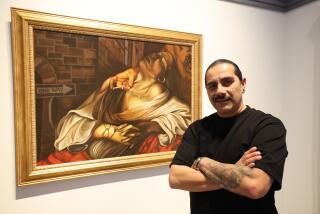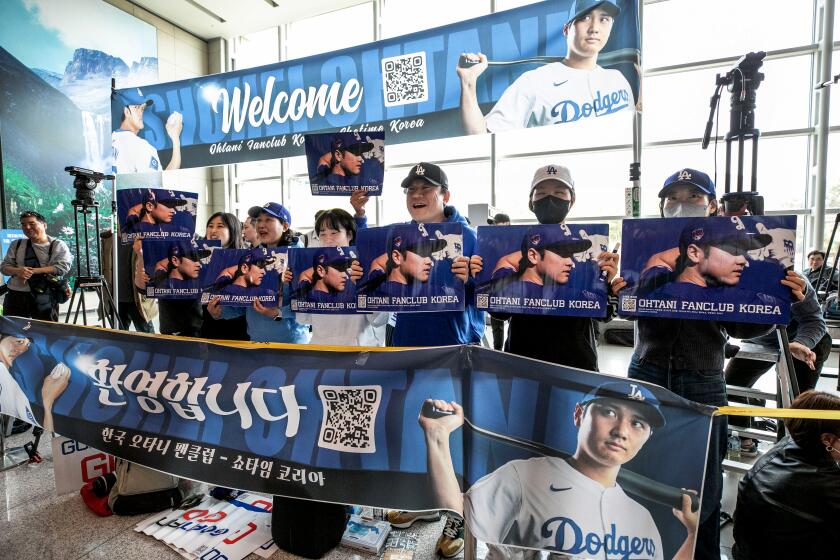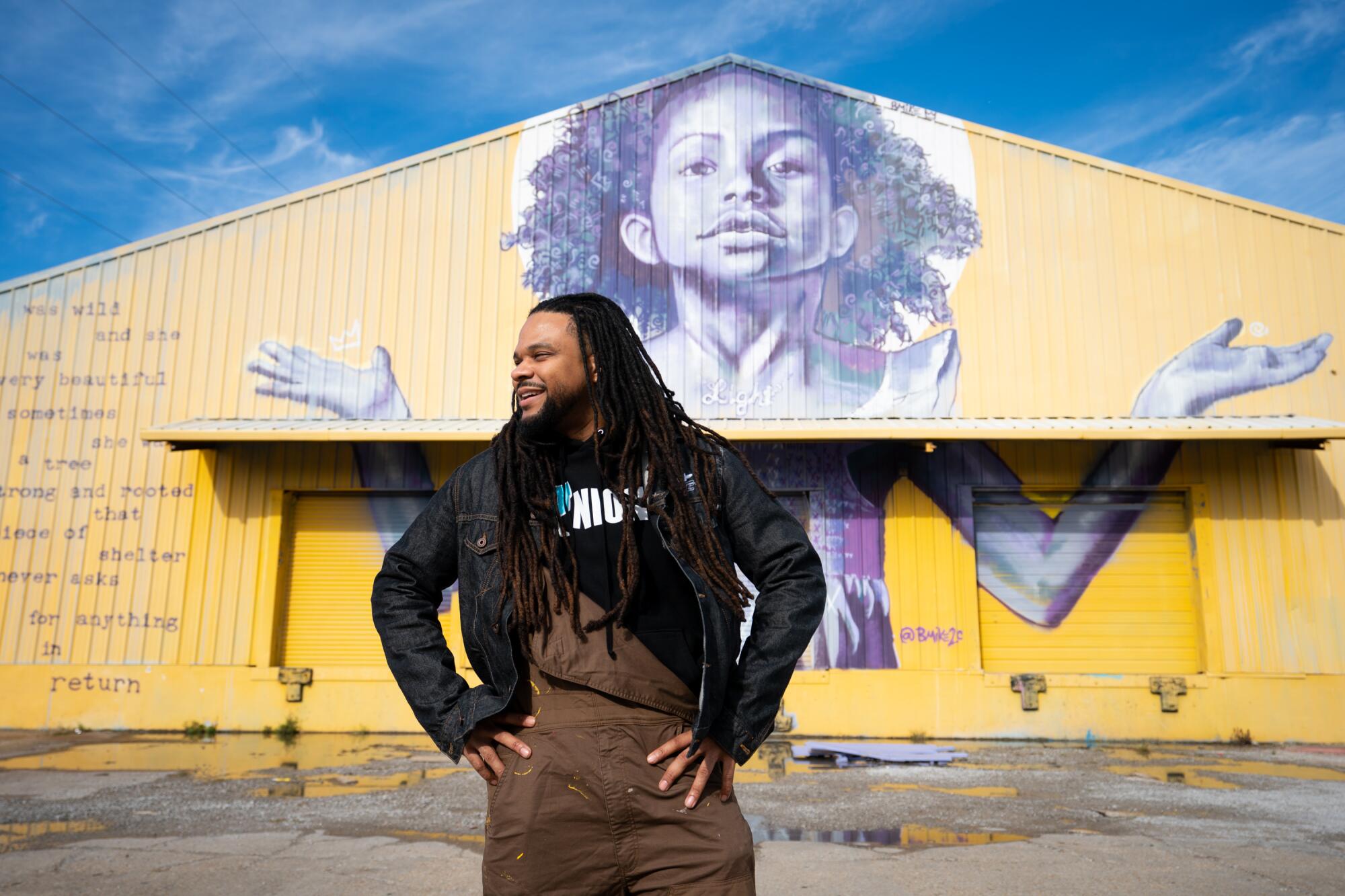
The winter sun is already going down on Mid-City and its crosshatch of shotgun houses, the porch-sitters eyeing passing bicyclists and stray cats.
The wrought-iron New Orleans of your imagination isn’t far, just beyond the overpass. You can see it, the hotel towers on Canal Street rising against a Creamsicle sky, 13 blocks but a world away.
Mid-City isn’t a streetcar ride or a slow walk with a big drink, but lingering here you could happily lose a whole afternoon. Listen to that saxophone coming from up the street or the flag footballers on the Lafitte Greenway playing on into dusk. And look over there on St. Louis Street: See the dreadlocked painter lowering the scissor lift where he’s been wielding that paint sprayer? He’s stepping down onto the sidewalk now. That’s his boom box blasting Kanye up the block. He’s another draw.
With his three proteges still working their rollers over an expanse of corrugated metal, Brandan “BMike” Odums looks at the paper in his hand, then stares up. A 20-foot-high exterior warehouse wall is covered with his blue outlines of large, enthusiastic faces, soon to be filled in with shaded purples, golds and reds. The paper shows a color rendering of the mural that will live here when he’s finished. It’s a tribute to the neighborhood’s history, to the shuttered Coliseum Arena around the corner where Joe Louis fought a century ago, where Martin Luther King Jr. spoke in the early days of the civil rights movement.
One of the issues with a project like this is the scale, enlarging the composition, but it’s not his only challenge. Odums, 34, spent the morning mentoring a group of young black artists at Studio Be, his workspace in the Bywater, just down the river bend from the French Quarter, and didn’t get out here until midafternoon, didn’t get set up and painting for another hour, and now he’s already losing daylight as the temperature drops.
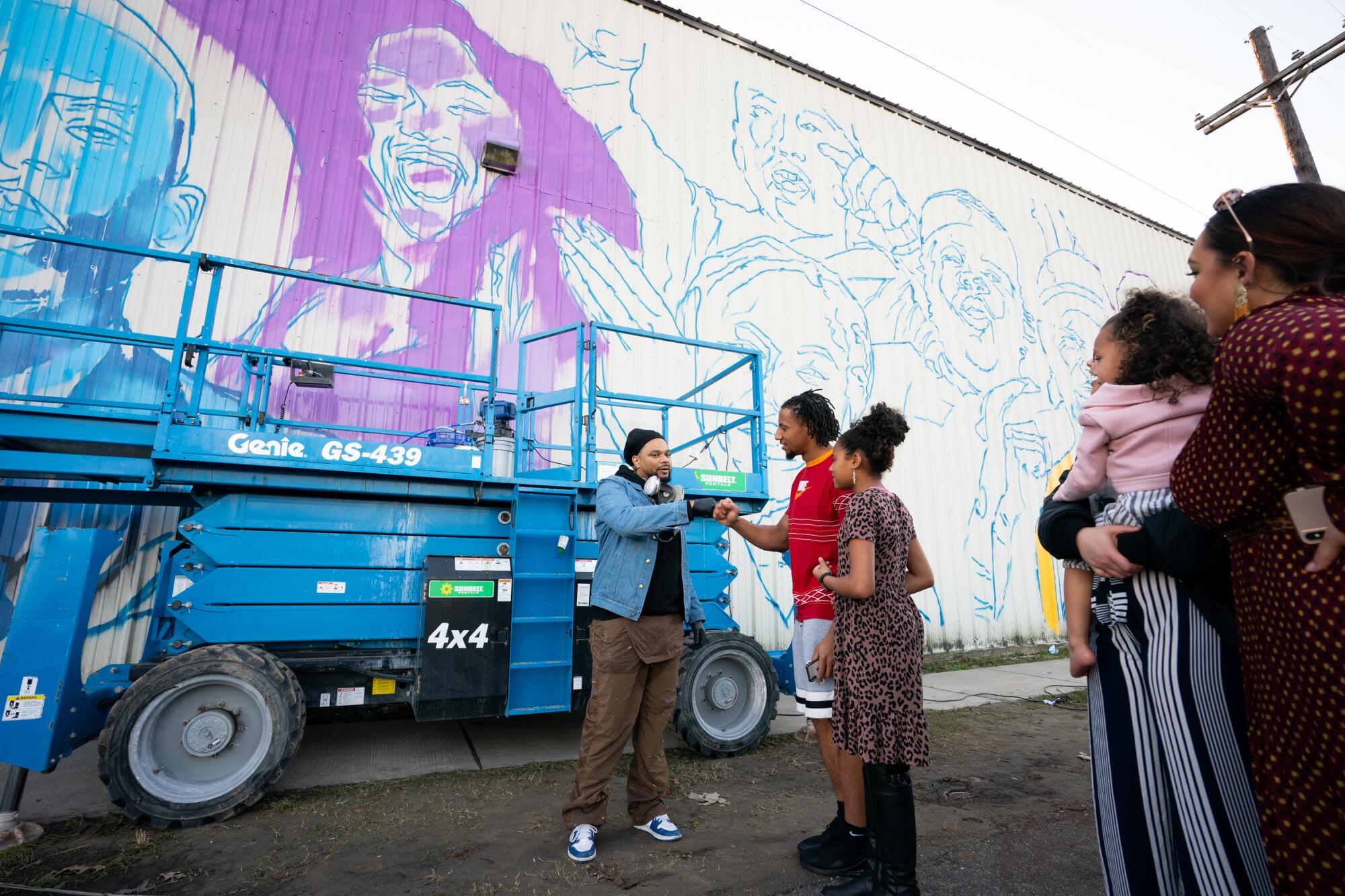
He’s just starting on this mural, the last of three commissioned by the city of New Orleans for its 300th birthday (and already a year overdue), and the scissor lift rental, not cheap, is due back in a week. Dressed in a hoodie under a denim coat, he is dealing with the cold, and the crunch of time and budgets and success, trying to meet demands that have only increased as his work has gained a following, first in this city’s abandoned corners and then beyond.
For a pastor’s son from Algiers on the city’s West Bank now realizing his unlikely dreams, the challenge, again, is scaling up. On the cusp of his first solo show at an art museum, he is thinking more about the success his murals have brought: what a street artist should say when his pieces are headed for a museum, what a black artist should say at this moment in America, what to say to reassure the folks at Tulane University’s Newcomb Art Museum that the four massive and mostly blank canvases hanging around his studio will be ready for a January opening. What to say to this reporter, asking how he defines himself — as an artist or activist or educator? The “activist” label appears over his picture on his official home page. But when said aloud, it gives him pause.
“I think activism is just caring, finding yourself and your community valuable enough to defend it against voices and things that don’t think it’s valuable,” Odums said.
In the photo accompanying his website biography, he’s wearing a black T-shirt with one word in white letters: ALCHEMIST.
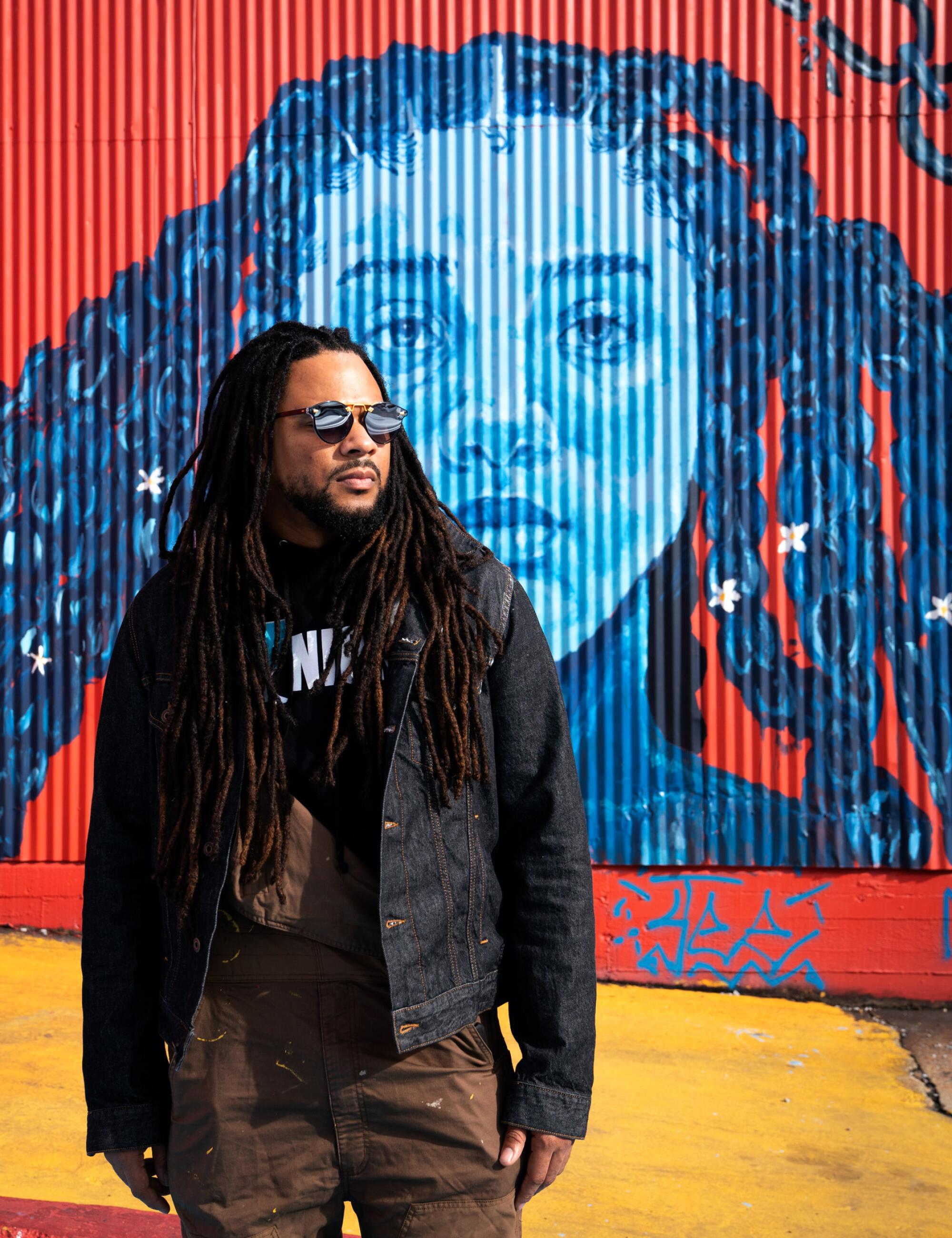
“When anyone asked me what I wanted to do when I grew up, I would say I just want to get to a point where whatever idea I had I could make happen,” he continued. “I’m closer to this than I’ve ever been. I’m close to that point now.”
The Tulane show that opened Jan. 18 and runs through May 23, titled “Not Supposed 2 Be Here,” is Odums’ attempt to grapple with the alchemy of his art and success, with the “impostor syndrome” he sometimes feels now that he’s doing collaborations with Nike, film work with Ava DuVernay, and receiving commissions from across the country.
Part of the show features artifacts from Odums’ past: videos he made as part of a collective of black creatives he started in college, old family photographs and early drawings and journals, some of which lay scattered across one of his worktables.
One notebook laying open is from May 2002, his senior year of high school. There’s an inspirational quote he scrawled on the inside of the cover, attributed to the evangelist pastor T.D. Jakes, that reads now like prophecy: “If in your thoughts you see something beyond where you are, if you are a dream, a goal, or an aspiration that others would think impossible, you may have to hold it. Sometimes you may have to hide it, and most of the time you will have to water it as a farmer waters his crops to sustain the life in them. But always remember they are your fields.”
The son of a Marine, Odums was born in California and grew up wherever his father was deployed: Okinawa, Japan; Jacksonville, N.C.; and eventually New Orleans, his mother Belinda’s hometown, where his family settled after Edward Odums retired. Brandan was in seventh grade, his artistic ability already apparent.
Edward became a pastor and opened a small church, preaching a gospel of black uplift to his congregation and at home to his three sons. “They knew what God expected of them, and what we expected of them as well,” he said.
Raised in a small northern Louisiana town, Edward told his sons about experiencing the backlash to school integration, what his own parents dealt with during Jim Crow. “We instilled in them: You don’t have to settle for life like that,” he recalled. “Respect others but stand up for yourself. See things clearly, but focus on finding a solution.”
Brandan Michael — it was Edward who first shortened it to “BMike” — was always serious and introspective. He got good grades and never cursed. He still doesn’t swear, doesn’t drink. “I’m the opposite of the person you go to for the party vibe,” he said.
After he finished high school and enrolled at the University of New Orleans to study film, Odums recruited friends to form 2-Cent, an artist collective that hit the street with cameras aiming to replicate the racially themed vignettes of “Chappelle’s Show.”
In the meantime, Odums’ part-time job as a camera operator at WLAE, the city’s public access television station, provided a “civics lesson” of sorts, thanks to the hours he spent positioned behind a studio camera absorbing the views and frequent frustrations of community activists, venting about inequities in New Orleans.
This was before Hurricane Katrina.
After evacuating to Texas with his family in 2005, and staying with relatives for four months, Odums returned to a hollowed-out New Orleans, feeling “on the verge,” he recalled, and frustrated. “I’m trying to make stuff — movies, videos — and there was nothing here.”
‘When anyone asked me what I wanted to do when I grew up, I would say I just want to get to a point where whatever idea I had I could make happen.’
— Brandan Odums
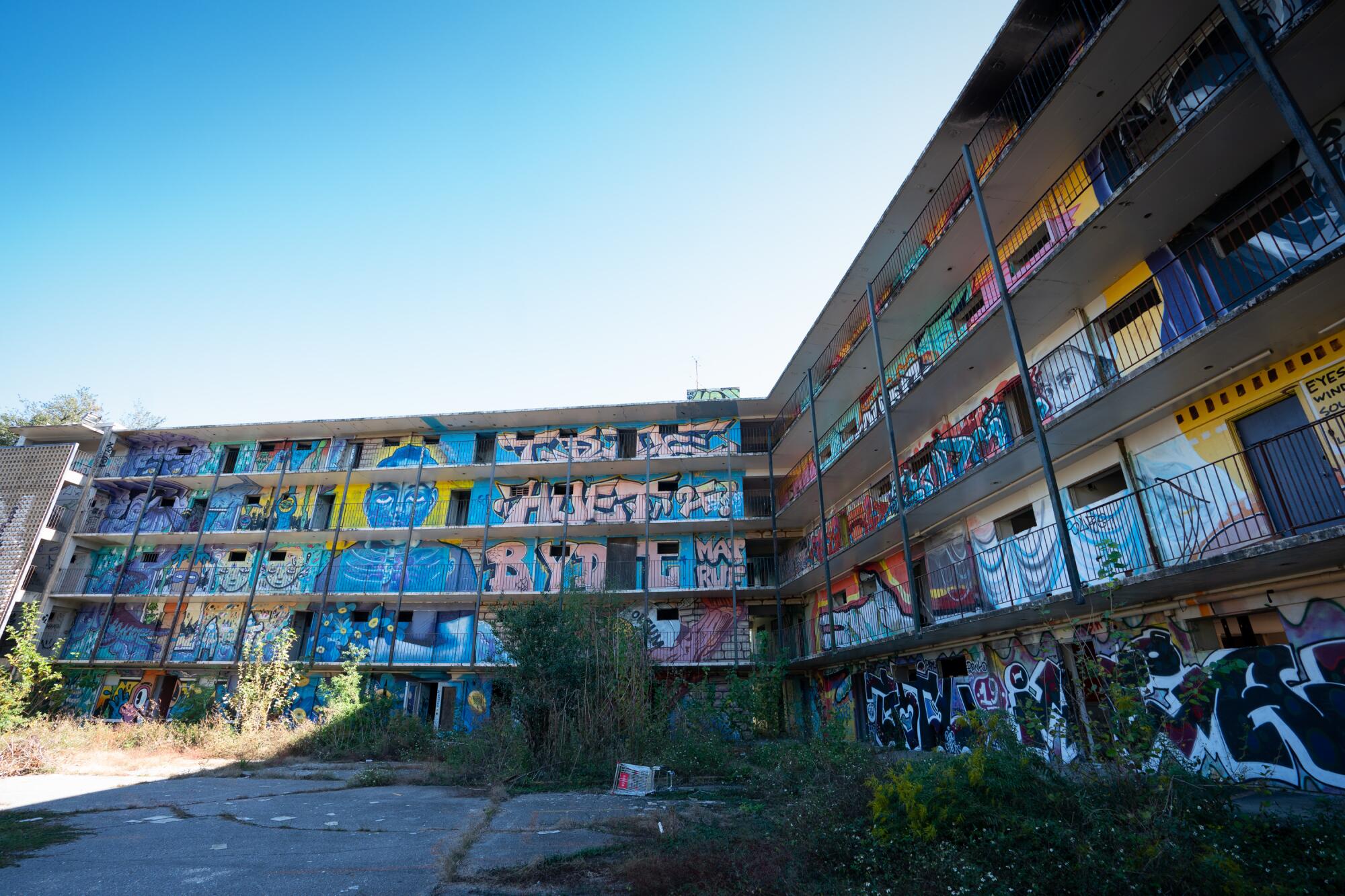
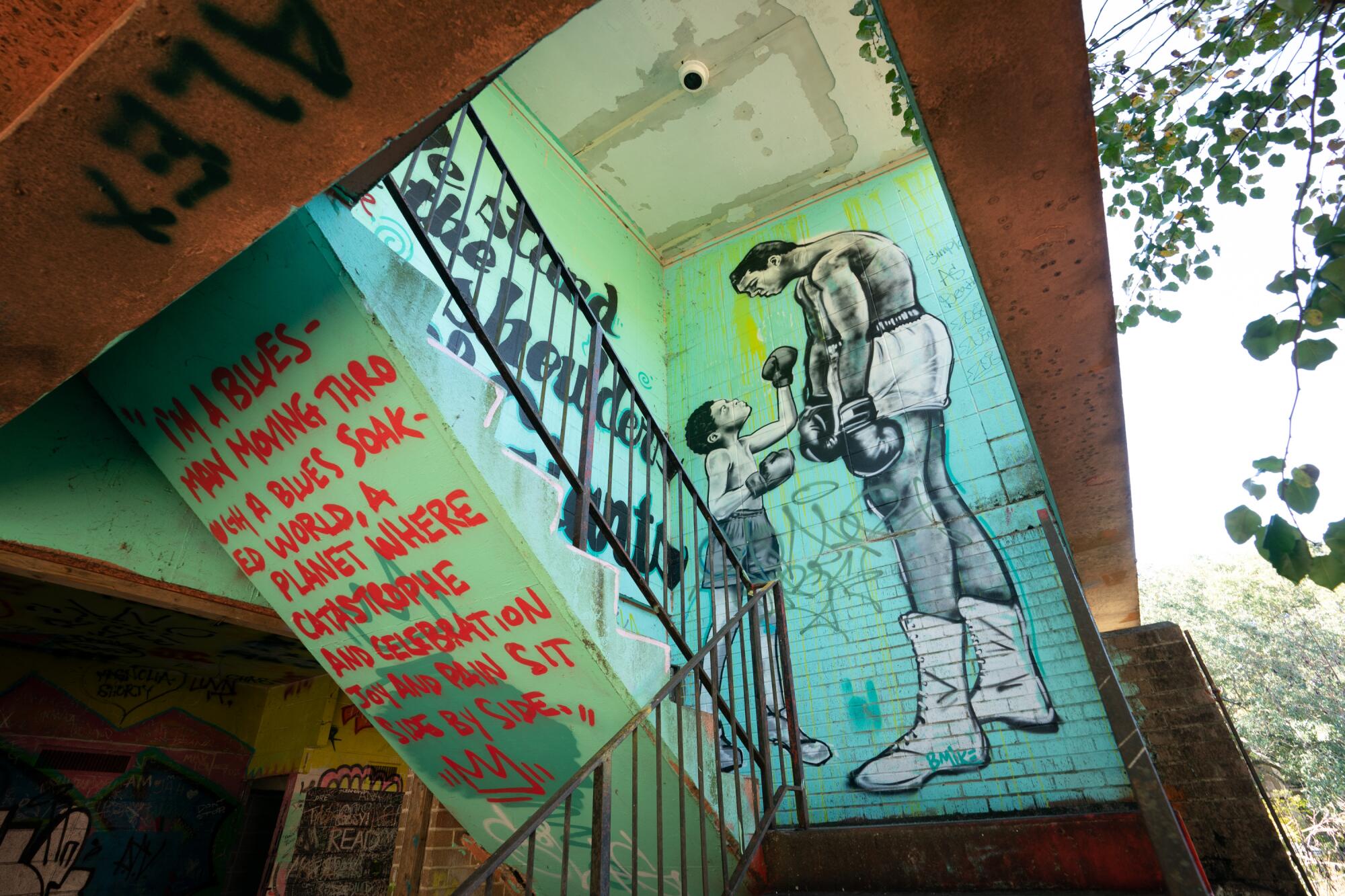
Odums quit his job, dropped out of college and moved to Atlanta. It was easier to make things there — just not the sorts of things he could share with his parents. “I’m in strip clubs [shooting] music videos. I was in environments where huge guns are pointed at the camera while people were rapping, so I couldn’t tell them this or show them my work,” he recalled. “I was still paying my bills, wasn’t asking them for things, but there were a lot of questions about what I was doing, when I was going back to school.”
Eventually, he came home. 2-Cent re-formed, documenting the city’s recovery in rap parodies posted on YouTube — Odums’ early foray into a style he calls “edutainment,” raising consciousness through art.
The collective’s work broadened in scope as it fielded a range of requests in a city slowly coming back together. “We just learned the power of saying yes,” Odums said. The group organized a youth arts camp and a book festival, and documented protests and unrest as citizens uprooted by Katrina, most of them black, seethed at the bureaucracy impeding their recovery.
Odums continued shooting and directing music videos, and flood-ravaged homes were often the desired backdrop. Not long after working on a 2013 shoot with Trombone “Shorty” Andrews in the Lower Ninth Ward’s Florida Avenue Housing Project, built just before Katrina and then left uninhabited after the storm, Odums returned there with friends seeking somewhere to paint. In his head, videos and film were still the focus of his career, but he picked up a can of spray paint and joined them.
Odums spent three months working around torn drywall and tangled wires, covering walls, some still blindingly white, others browned by floodwater, with portraits — bursts of color that showed Martin Luther King Jr. holding his wife, Coretta; Malcolm X wielding a shotgun; Angela Davis; Black Panthers and Muhammad Ali; James Baldwin, Gordon Parks and Jean-Michel Basquiat.
Word spread. Intrigued by Instagram images of the bright, bold portraits and the profundity of their context, people were suddenly seeking out the guerrilla art project. It made the newspaper. But the city ignored Odum’s pleas to temporarily open the space for visitors, creating an aura of illicitness and immediacy around what he’d called “Project Be.”
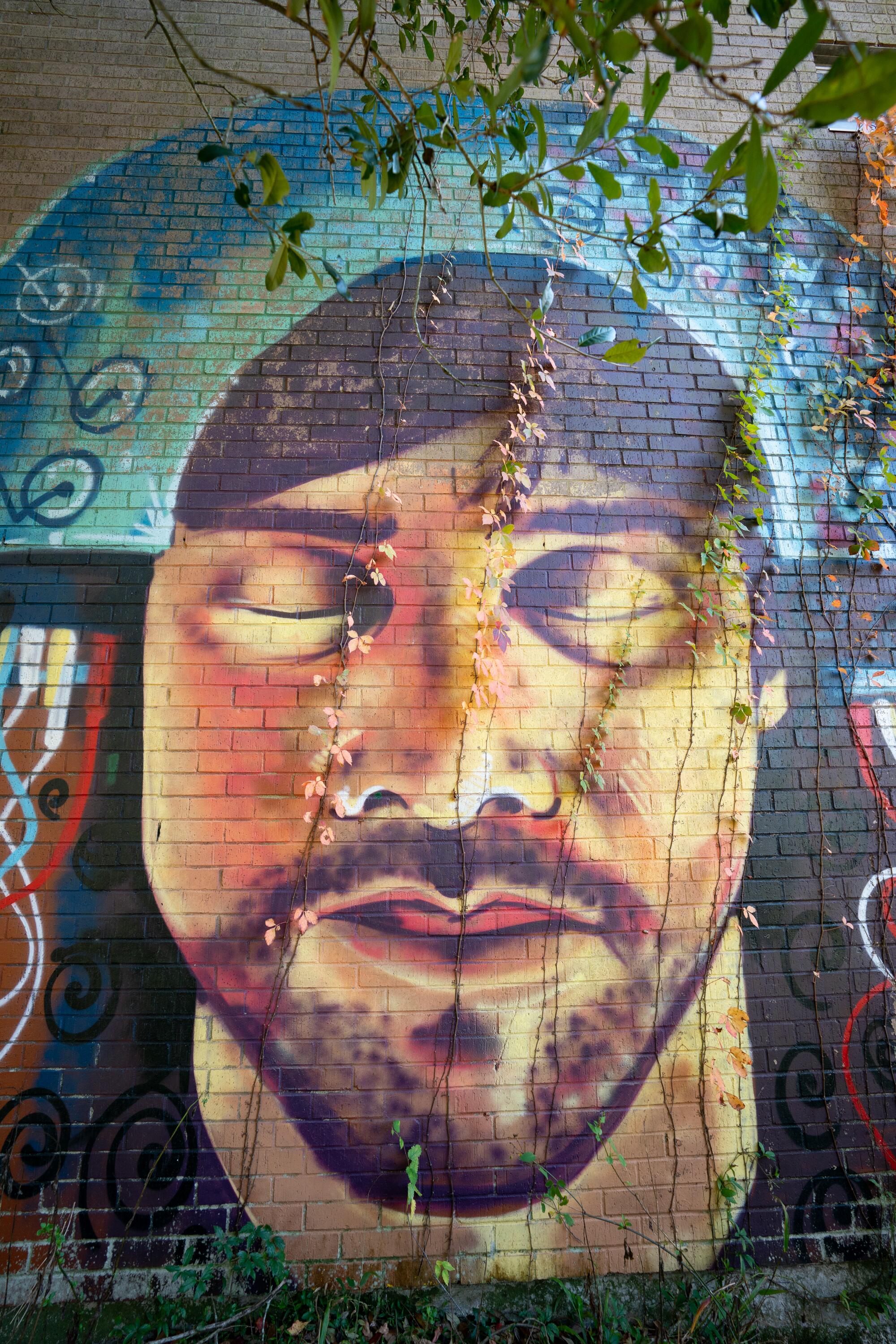
As a kid, Odums knew DeGaulle Manor, where his uncle lived, as a place his parents told him to avoid. But after the success of “Project Be,” the abandoned Algiers housing project became his next canvas. He led a crew of more than 30 street artists to the complex, adorning the L-shaped buildings’ five-story facades with images, words and color.
Odums focused on the two-story recreation center in the middle of the courtyard, again depicting his heroes — Gil Scott-Heron, Fannie Lou Hamer, Harriet Tubman. Beside a busted-out door, he painted an anonymous marcher holding a sign that reads, “We Demand Fair Housing Now.”
This installation was open to the public and even sanctioned by the property manager, whom Odums convinced to let the project proceed. Both men were hopeful that the attention from the art might hasten the repurposing of the empty space. The manager had showed Odums preliminary drawings for a future sports center on the site.
Some 30,000 people flocked to “Exhibit Be” in fall 2014. Its closing “Block Power” party on Martin Luther King Jr. Day in 2015 drew thousands. Odums stood atop a stage as Erykah Badu and Trombone Shorty performed in the late afternoon sun. Looking down over all of it was the visage of George Carter, a 15-year-old New Orleanian who’d been shot and killed earlier that year, rendered five stories high in blue paint, his head framed by a gleaming yellow halo.
“Every time I went, I went with flowers for George, and a lot of people did,” recalled Kaitlyn Gaddis, a friend of Odums. “I think that in a lot of ways that was a big part of how special it was. The colors are vibrant — and people are learning names they didn’t know before. It was just a special time.”
For Odums’ parents, it was a revelation. Pride overcame any nagging doubts about their son making art his career. “Just seeing the work, all those people he brought together, I was in awe,” Edward Odums said. “He had projected what was inside of him onto these walls.”
The wrecking ball, however, never came to DeGaulle Manor. “Exhibit Be” changed little but Odums’ own trajectory.
In 2016, he rented a 36,000-square-foot railroad warehouse in the Bywater, christened it Studio Be, and spent six months working on the solo show “Ephemeral Eternal,” which is on permanent display. A continuation of the art that began outside in abandoned places, it’s another rumination on what endures.
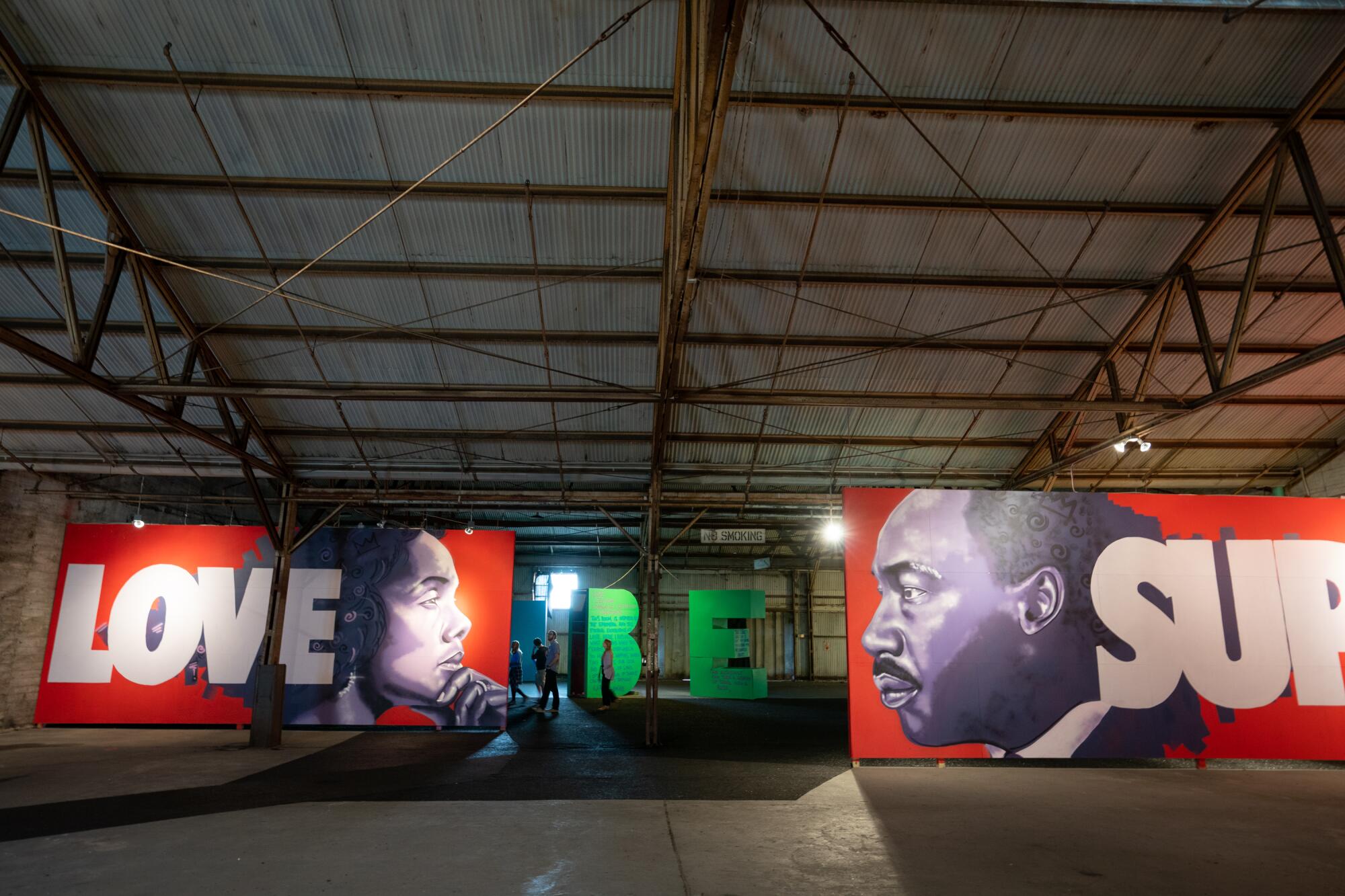
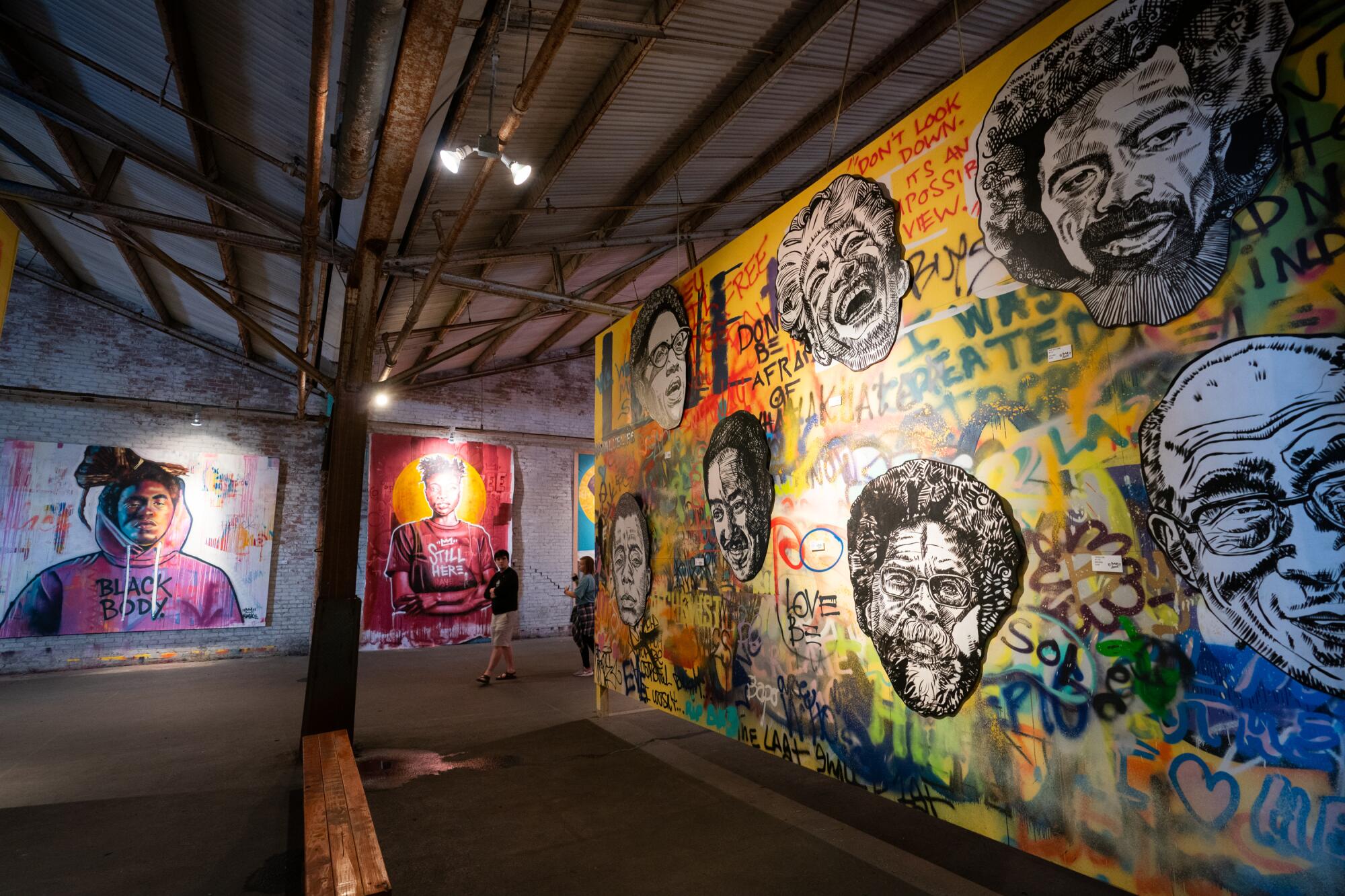
Massive spray-painted portraits of King fill the wall around the corner from a quartet of portraits: Trayvon Martin, Michael Brown, Eric Garner and Oscar Grant, each holding the same “I Am a Man” sign that was carried by striking Memphis, Tenn., sanitation workers the day King was shot in 1968. Unknown black New Orleanians are depicted as religious icons on colorful, 12-foot canvases. Taped to another wall are coloring book tear-outs of Odums’ drawings, crayoned in by young children who come here for art instruction.
As with the other projects, this one attracted an audience as word — and Instagram images — spread.
Colin Kaepernick visited on the advice of a friend, sparking a collaboration with Odums, who painted a mural of the former quarterback during last year’s Super Bowl and attended the athlete’s “Know Your Rights” symposium for black teens held in Atlanta last October. Kevin Durant, Zion Williamson and countless athletes have visited. DuVernay, after seeing the space, wrote an Odums-based character into her OWN series, “Queen Sugar,” then cast him in those scenes and filmed them at his studio.
Over the last four years, Studio Be has become a de facto community center for young black creatives from New Orleans and, increasingly, a draw for tourists. (Gallery admission is $20, which, along with the souvenir spray cans, posters and T-shirts in the gift shop, covers rent and operating costs — and funds the youth camps and art programs.)
“I think we attract people who don’t normally consume art,” Odums said on a quiet Sunday night. “I suspect that when they come into a space like this, they see a level of truth that they may not have seen in other spaces.” As he worked, a family, British by the sound of their accents, took pictures in the parking lot outside under his mural of a young black girl.
‘I think activism is just caring, finding yourself and your community valuable enough to defend it against voices and things that don’t think it’s valuable.’
— Brandan Odums
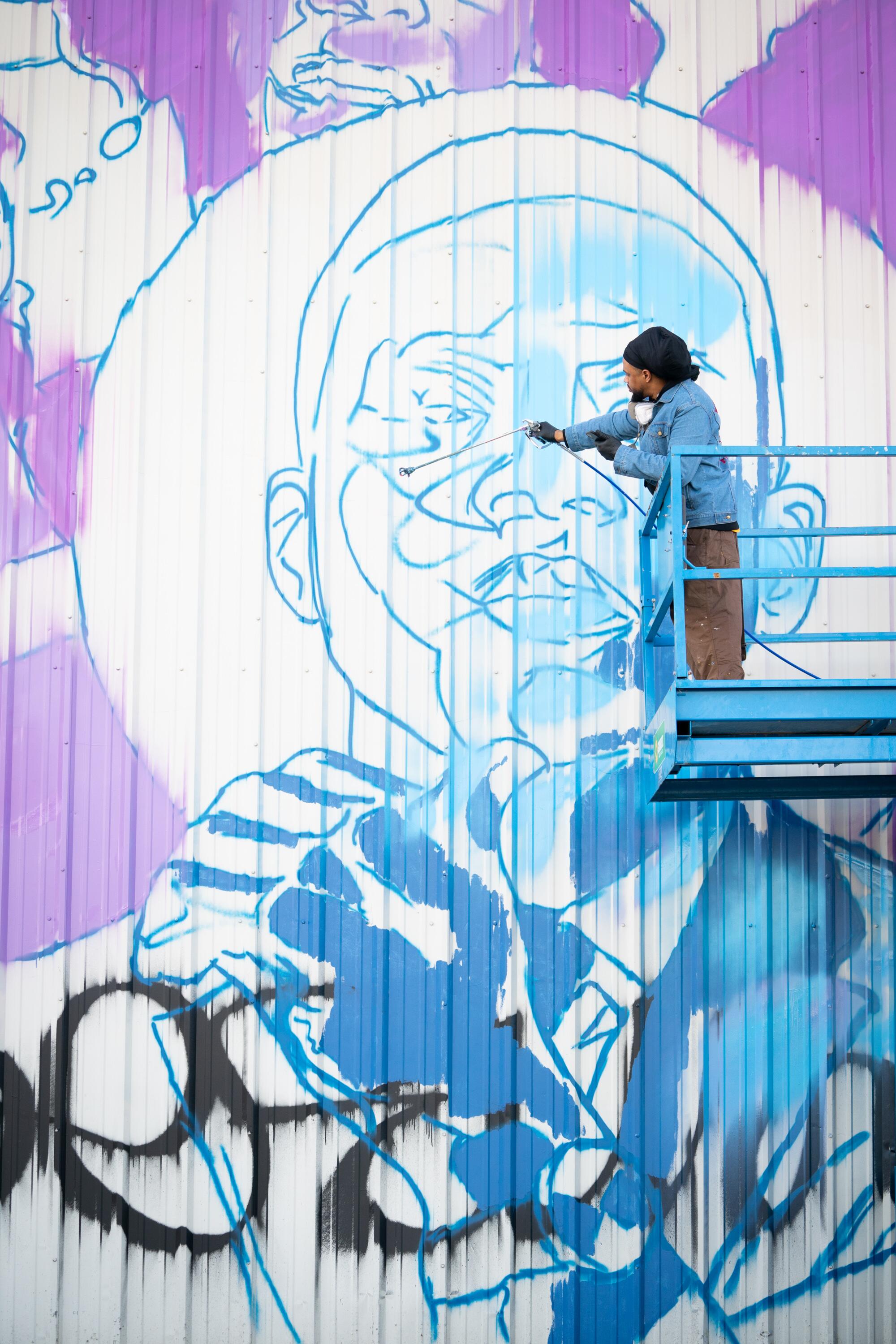
Tourism can be complicated in this fabled city, home to a large black underclass of workers, often encountered by visitors only when they’re part of the dinner service or the brass band. Odums, by painting their faces in public spaces, is ensuring that they’re seen differently — that they’re seen at all.
Odums gets it, what he calls “You’re Not From Here-ism.” But he doesn’t get caught up in it.
“A lot of New Orleans people naturally have this perspective, because there’s been this history of exploitation, that your value is more than my value just by you visiting here. That’s what the city has taught us. But I always thought that’s one of the beautiful things about this city: We learn how to welcome people, we engage.”
People, Odums said, are by nature “tribal,” adding, “I understand why people feel the need to revert back to their tribes and say, ‘OK, this is a safe space for me. I’m not uncomfortable.’” But “sometimes for you to grow, for there to be progress, you have to be uncomfortable.” You have to be open to the new.
Opening his own space, a sanctuary celebrating blackness, to people of all stripes is about bridge-building. But he wants to serve his own tribe first. “I can connect both of them, the tourists and the purists,” he said. “But I also know my priority.”
Odums has a steady stream of outside commissions and projects that pay the bills. But five years after “Exhibit Be,” he is focused on ensuring that his success transforms more than a canvas or a career. He hopes to one day purchase the warehouse that houses Studio Be — to preserve not just his art but the workshops and educational programs it sustains in his community.
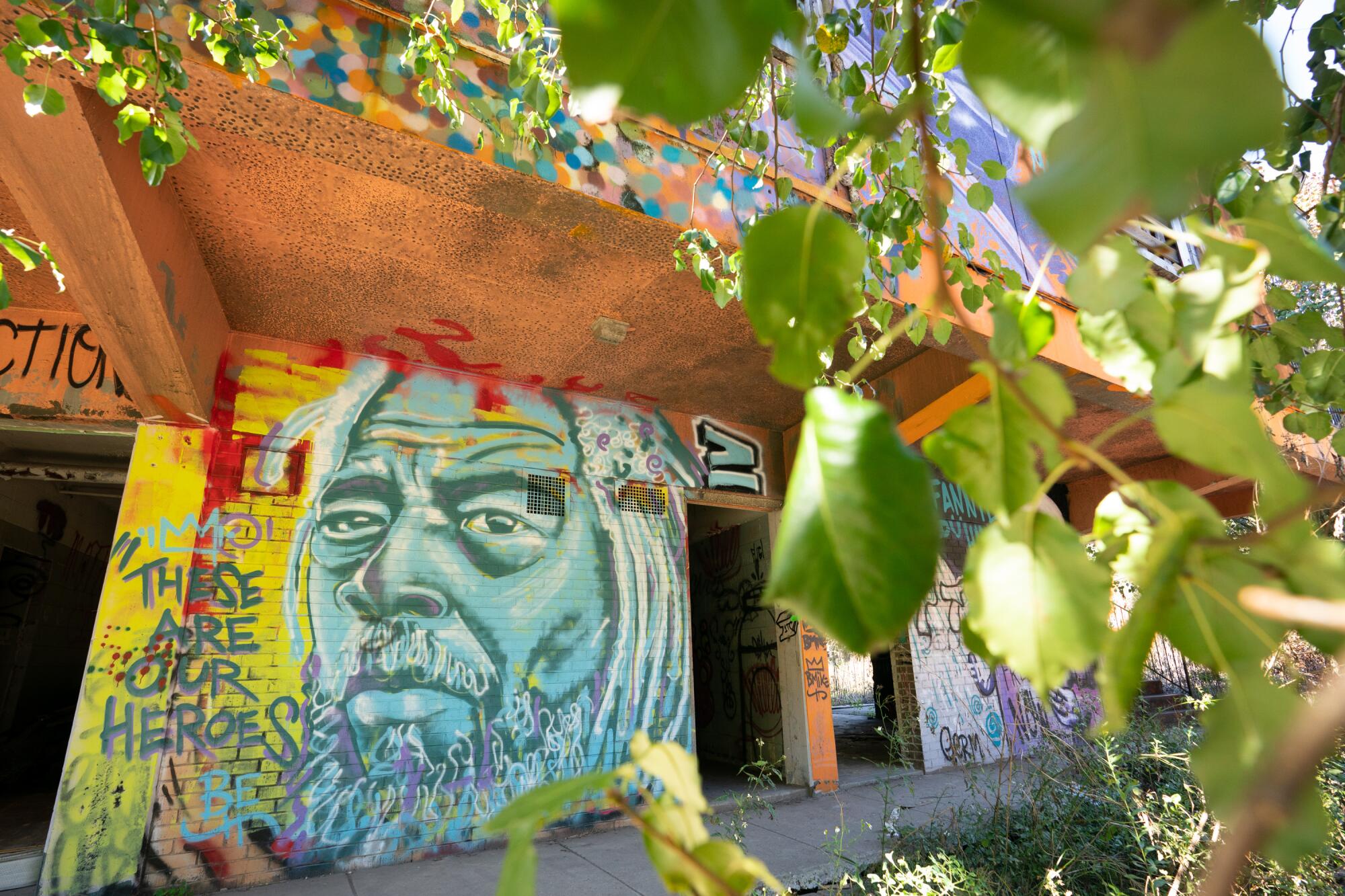
In his first mural for the city’s tricentennial, he painted cornetist Buddy Bolden and a group of early jazz musicians on a two-story wall in the French Quarter, but the faces are those of Odums’ friends. He did it again for a Tulane mural, coaching teens who attended his youth camp as they posed as superheroes, a meditation on whether blacks require superpowers for others to see their value. Tulane’s curators, however uneasy they’d been about Odums finishing in time, know his show will have a lasting impact.
“Sometimes when he doesn’t reply to our emails, we look on Instagram and see that he’s giving a tour to the governor. We understand the role he plays in the community,” said Monica Ramirez-Montagut, the museum’s director. “He reminds us on the streets of New Orleans who those historic figures are and how much they’ve contributed to the culture.” The show’s MLK weekend opening drew nearly 2,000 people.
Seven years after first painting his heroes in a forgotten corner of the city, Odums has become a civil rights leader himself. During sessions with the teens from his camp, he’ll often spend more time talking about the 4th Amendment to the U.S. Constitution than how to operate a camera. In December, up against Tulane’s deadline, he spent one weekend with inmates at a correctional facility in Norco in Riverside County and another in Palo Alto in Northern California for a mural project and symposium organized by Laurene Powell Jobs’ Emerson Collective.
As inspiring as black history and Odums’ depiction of it can be, his work reflects an awareness of the long slow arc toward justice, of something inexorable about America that no activist or artist, no individual, has fundamentally changed.
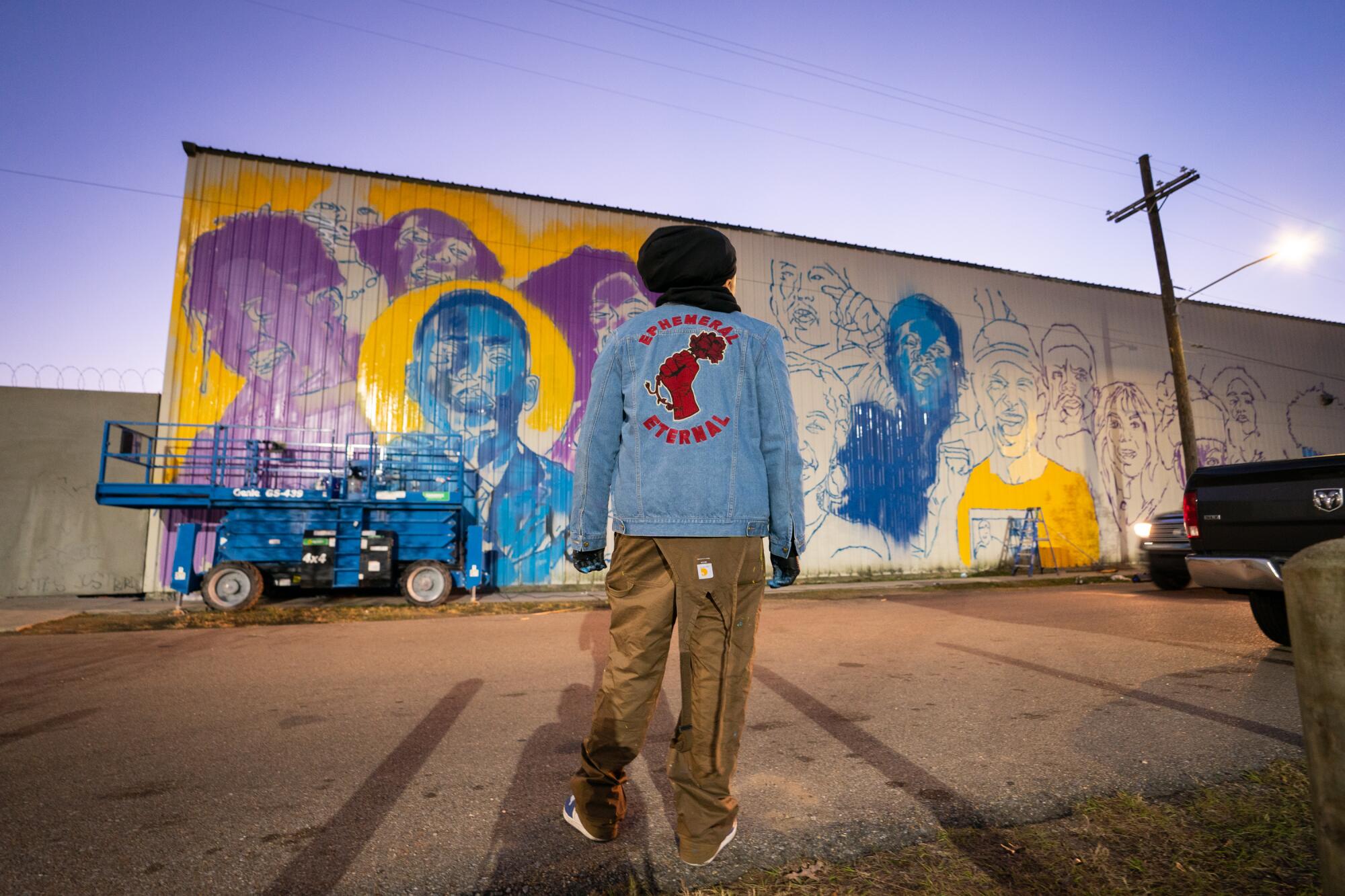
From his open studio door, you can see up the street, not far, to the corner where a train came to a stop on a June day long ago. You can almost see a man— roughly Odums’ age — being arrested and taken off at Press and Royal. The mixed-race man, a Creole, had intentionally violated Louisiana’s separate car law by sitting with whites, part of an organized legal challenge to segregationist state laws that endured even after the adoption of the 13th and 14th Amendments.
You may remember that Homer Plessy’s case rose all the way to the Supreme Court, just as he’d planned, in 1896. You may also remember that John Howard Ferguson won, cementing “separate but equal” in American law for the next six decades.
Some 124 years after Plessy vs. Ferguson was decided, Odums continues to contemplate his place in America’s story. “At some point you think about: How much of my performed resistance is a part of the architecture of America? Is a part of the status quo? Because you have to create an idea or an illusion that there is an alternative, even though the alternative is never designed to win, or never designed to be successful,” he said.
He raises his can back up to the canvas as he finishes the thought: “That conversation doesn’t have a resolution, at least as I see it now.”
More to Read
Start your day right
Sign up for Essential California for news, features and recommendations from the L.A. Times and beyond in your inbox six days a week.
You may occasionally receive promotional content from the Los Angeles Times.

